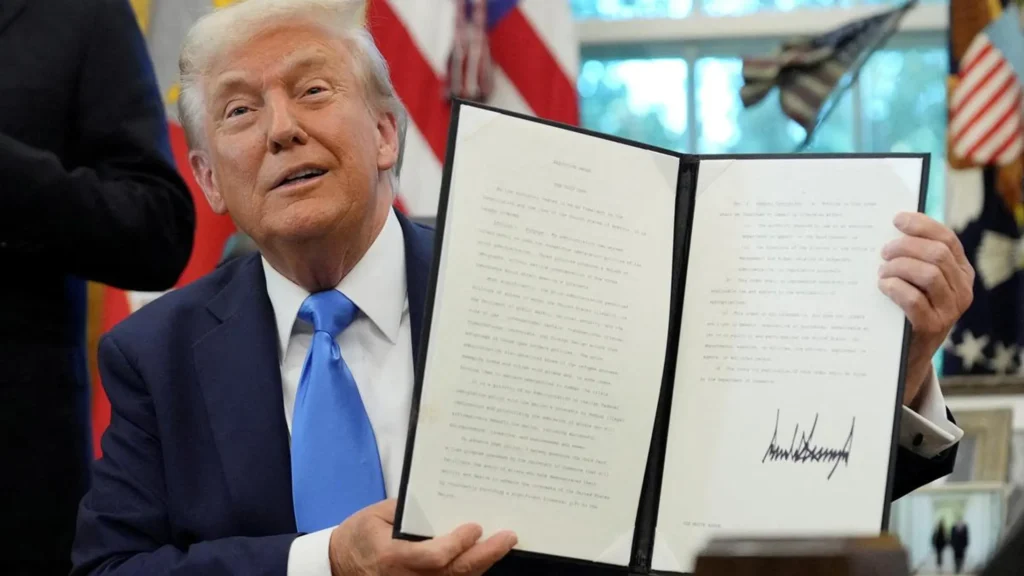
U.S. Clarification on H-1B Visa Fee Brings Relief to Tech Industry, But Experts Warn of Long-Term Impact
Updated: September 22, 2025 | Source: The Hindu Bureau
The United States government has issued a clarification on the controversial $100,000 H-1B visa fee announced by President Donald Trump on September 19, 2025. According to the White House, the fee will be a one-time payment applicable only to new applicants filing petitions after September 21, 2025. Existing visa holders and renewals are not affected.
This announcement, made by White House Press Secretary Karoline Leavitt on September 20, 2025, has eased widespread panic among Indian professionals and the global tech industry. The clarification comes after U.S. Commerce Secretary Howard Lutnick had initially indicated that the fee would apply annually to both new applicants and renewals, creating uncertainty for thousands of workers.
Why the Clarification Matters

The H-1B visa program is the backbone of the Indian IT sector’s presence in the United States. With nearly 70% of H-1B holders being Indian nationals, any sudden change in policy directly impacts India’s tech exports, employee mobility, and long-standing contracts with U.S. companies.
Following the initial announcement, many Indian professionals cancelled travel plans or scrambled to return to the U.S., fearing that they might be locked out. Immigration attorneys and corporate legal teams also raised concerns about the legality and practicality of imposing such a steep recurring fee.
The White House’s latest statement has calmed nerves by confirming:
- The $100,000 fee is not annual but a one-time levy.
- It will affect only new petitions filed after September 21, 2025.
- Renewals and petitions filed before the proclamation remain unaffected.
Industry Voices: Relief, But With Caution
While the clarification has been welcomed, experts caution that the long-term effects may still be significant.
“For the next six months to one year, there’ll be no impact because last year’s petitions are already filed and the lottery system will continue. But going forward, the deferred effect will be felt,” said Mohandas Pai, former Infosys CFO and industry veteran.
Analysts believe that while Indian IT companies may not face immediate disruption, the next application cycle could reshape hiring strategies, onsite deployments, and pricing models for U.S. clients.
Political Reactions in India
In India, the development has triggered a political debate. Opposition parties criticized Prime Minister Narendra Modi for not taking a stronger stance against what they called “strong-arm tactics” by the U.S. They argued that New Delhi must safeguard the interests of Indian tech talent, given its outsized role in the H-1B program.
What Comes Next for Indian IT and Tech Professionals?
Industry observers say the short-term relief should not overshadow the structural risks:
- Higher Costs for Employers: U.S. firms may hesitate to sponsor fresh H-1B applicants due to the steep one-time cost.
- Shift Toward Remote Delivery: Companies may accelerate offshore operations in India or nearshore alternatives to reduce dependency.
- Policy Uncertainty: If the fee structure evolves further, IT firms will need to continuously adapt compliance and workforce mobility plans.
Conclusion
The White House clarification has provided breathing space for Indian tech workers and global IT companies, reassuring them that existing visas remain untouched. However, the $100,000 barrier for new applicants signals a new era of cost-driven visa policy, and industry leaders warn that its deferred impact could reshape India-U.S. tech relations in the coming years.
For now, the tech industry watches closely as the U.S. enters a new chapter in its immigration and workforce strategy.






